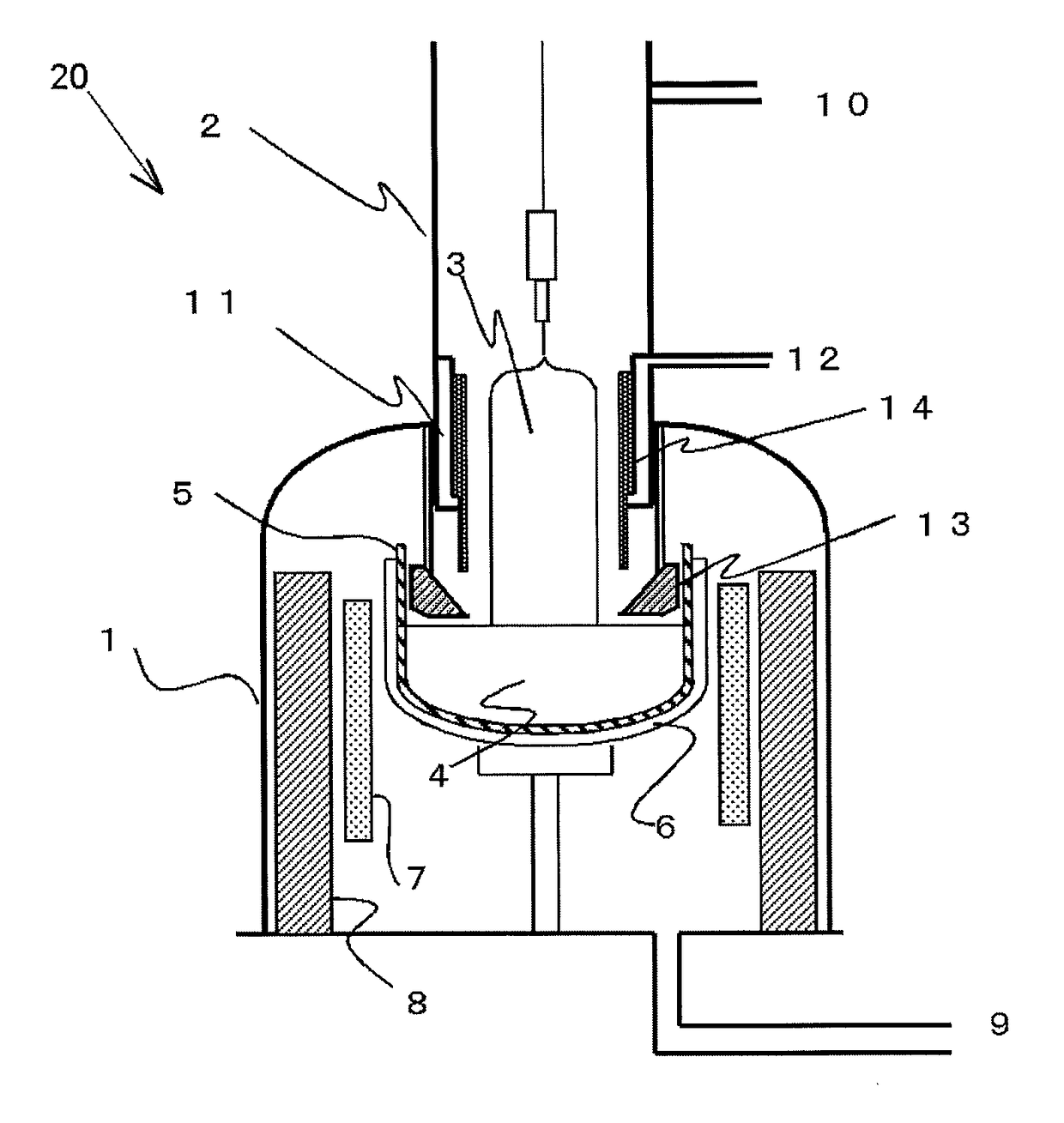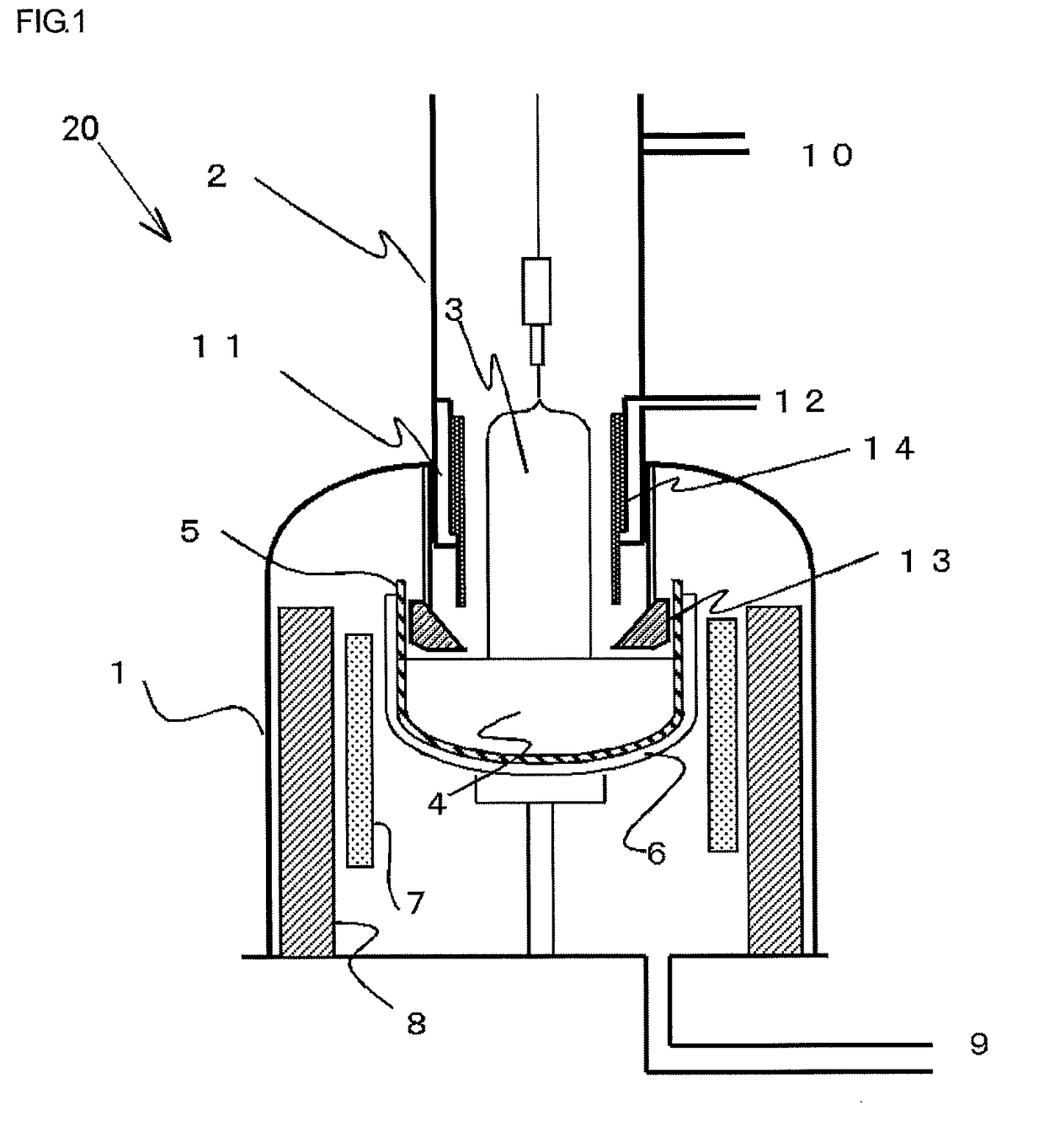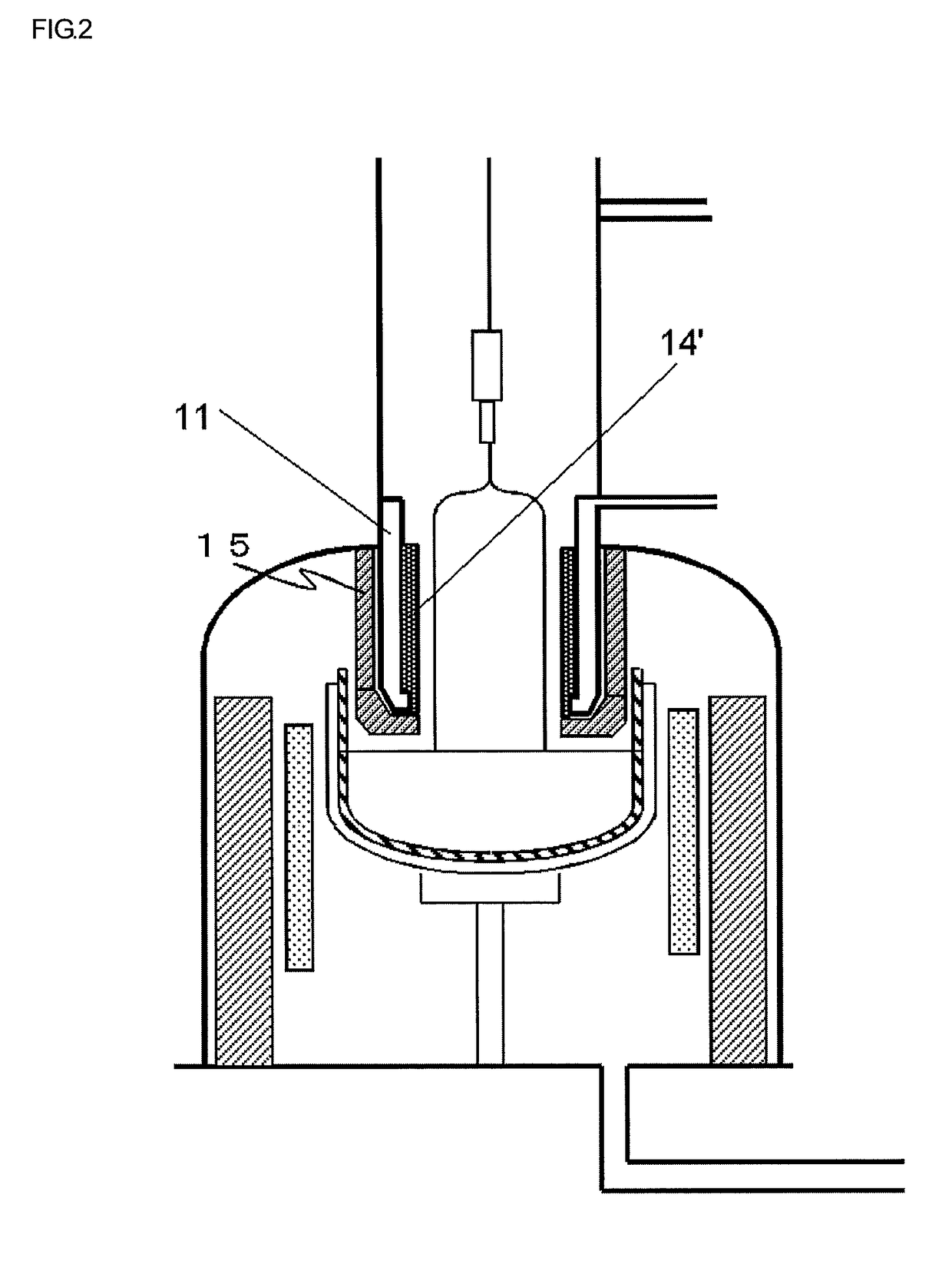Method for manufacturing a defect-controlled low-oxygen concentration silicon single crystal wafer
a technology of low-oxygen concentration and silicon single crystal, which is applied in the direction of single crystal growth, polycrystalline material growth, chemistry apparatus and processes, etc., can solve the problems of increased leak current, reduced breakdown voltage, and high cost of epitaxial wafers, and achieves low cost and good productivity.
- Summary
- Abstract
- Description
- Claims
- Application Information
AI Technical Summary
Benefits of technology
Problems solved by technology
Method used
Image
Examples
examples
[0088]Although the present invention will now be more specifically explained hereinafter based on examples and comparative examples, the present invention is not restricted thereto.
experiment 1
[0089]Defect characteristics of a low-oxygen crystal were first grasped.
[0090]A defect distribution in a silicon crystal having usual oxygen concentration relative to a growth rate is as schematically shown in FIG. 4(a). A vacancy dominant region is provided on a high growth rate side, and an interstitial Si dominant region is provided on a low growth rate side.
[0091]In the high rate side region, many silicon single crystal ingots having different oxygen concentration values were grown in the region where vacancies are sufficiently dominant that OSF nuclei are considered to adhere to an outer periphery when a wafer is sliced out. Wafer-shaped samples are sliced out from these silicon single crystal ingots and subjected to an FPD evaluation. As observation of FPDs, the wafer samples were subjected to surface grinding, cleaning, and mirror etching using a mixed acid, then the samples were left in an preferential etchant consisting of a hydrofluoric acid, a nitric acid, an acetic acid,...
experiment 2
[0098]Further, to see an influence given on defects that are detected as the FPDs by the oxygen concentration, an experiment of investigating a defect region while changing a growth rate was conducted.
[0099]As a single crystal manufacturing apparatus and a hot zone (HZ), the apparatus shown in FIG. 1 was used. This single crystal manufacturing apparatus has a water-cooled SUS cooling cylinder that is extended from ceiling portion of a main chamber toward a surface of a raw material melt and is formed into a cylindrical shape that surrounds a silicon single crystal ingot. Furthermore, a cooling auxiliary cylinder is fitted in this cylinder. This cooling auxiliary cylinder is made of a graphite material. Moreover, slit 16 cleaving in the longitudinal direction as shown in FIG. 3 is formed in the cooling auxiliary cylinder. A lower end of the cooling auxiliary cylinder is configured to extend to a lower side of a lower end of the cooling cylinder and cool the silicon single crystal ing...
PUM
| Property | Measurement | Unit |
|---|---|---|
| temperature | aaaaa | aaaaa |
| diameter | aaaaa | aaaaa |
| melting point | aaaaa | aaaaa |
Abstract
Description
Claims
Application Information
 Login to View More
Login to View More - R&D
- Intellectual Property
- Life Sciences
- Materials
- Tech Scout
- Unparalleled Data Quality
- Higher Quality Content
- 60% Fewer Hallucinations
Browse by: Latest US Patents, China's latest patents, Technical Efficacy Thesaurus, Application Domain, Technology Topic, Popular Technical Reports.
© 2025 PatSnap. All rights reserved.Legal|Privacy policy|Modern Slavery Act Transparency Statement|Sitemap|About US| Contact US: help@patsnap.com



